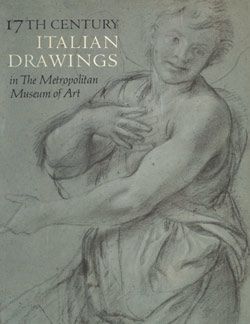The Triumph of Nature Over Art (design for an engraving of 'De Florum Cultura')
Pietro da Cortona (Pietro Berrettini) Italian
Not on view
This drawing by the Baroque master Pietro da Cortona is a design for one of the illustrations in a treatise on gardening written by the Jesuit professor, Giovanni Battista Ferrari (1584-1655). The book, titled 'De Florum Cultura' (Rome, 1633), published this design engraved in reverse by Johann Friedrich Greuter (1590-1662). The artist illustrated an allegorical passage in Ferrari's text that tells of a contest between Nature and Art. Art, kneeling at the right with grafting knife in hand, has produced a rosebush with flowers of three colors, but Flora is about to crown Nature, who stands pointing at the miracle of her own doing. As if by magic a Chinese rose tree has sprung from the ground. Vertumnus dances, holding a sistrum aloft, and three boys -- Lucifer, Meriggio, and Hesper -- circle the tree while its flowers change from white, to pink, to scarlet, as they are said to do in the course of a day. The boys are identified respectively by a lily branch, a rose, and a bleeding heart, and which allude to Dawn, Noon, and Evening. The wonders of Nature are seen to be more marvelous than those of Art. Drawings by Pietro da Cortona for other illustrations in Ferrari's book are in the Peter and Nellie de Boer Collection, Amsterdam (Cybele before the Council of the Gods), and in the Museo del Prado, Madrid (An Allegorical Scene with the heraldic Barberini Bees; repr. Blunt and Cooke, 1960, p. 76 fig. 57).
Due to rights restrictions, this image cannot be enlarged, viewed at full screen, or downloaded.






